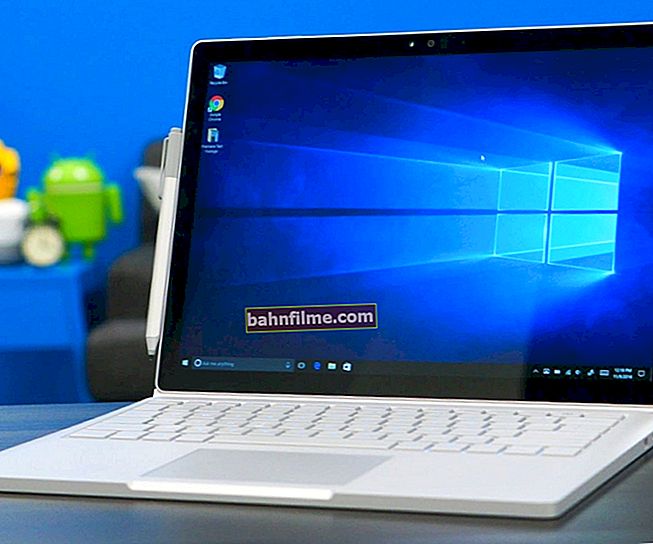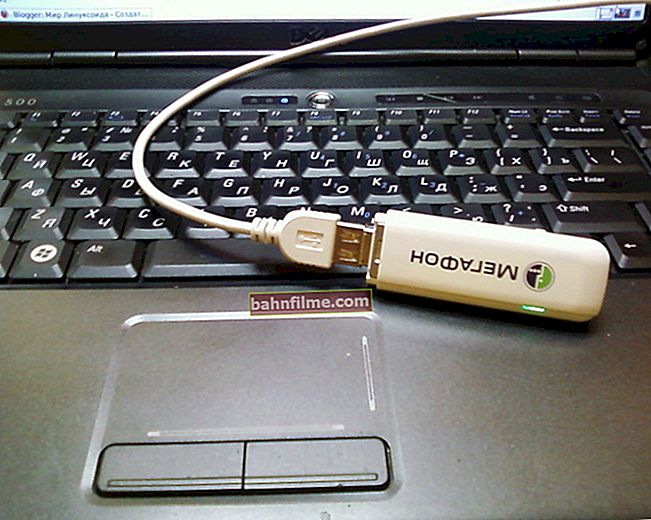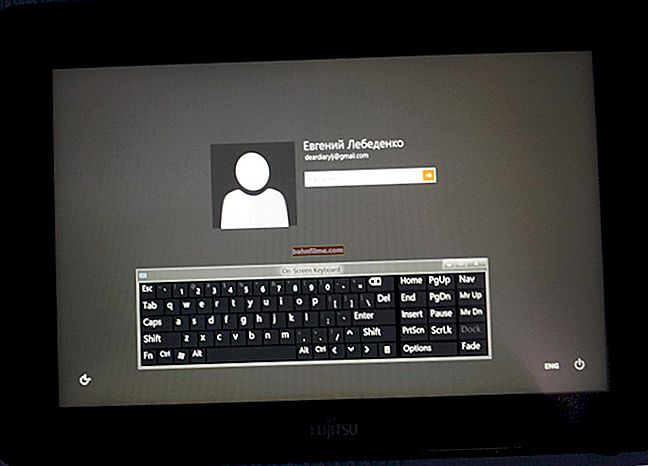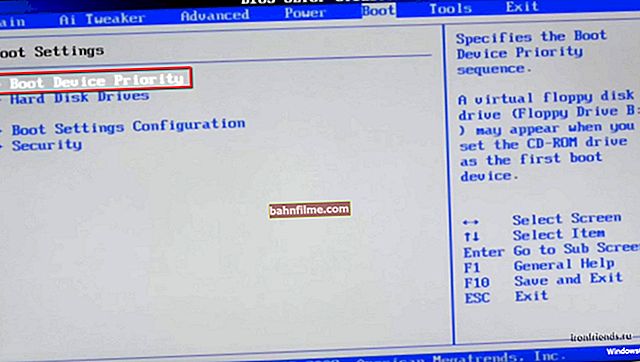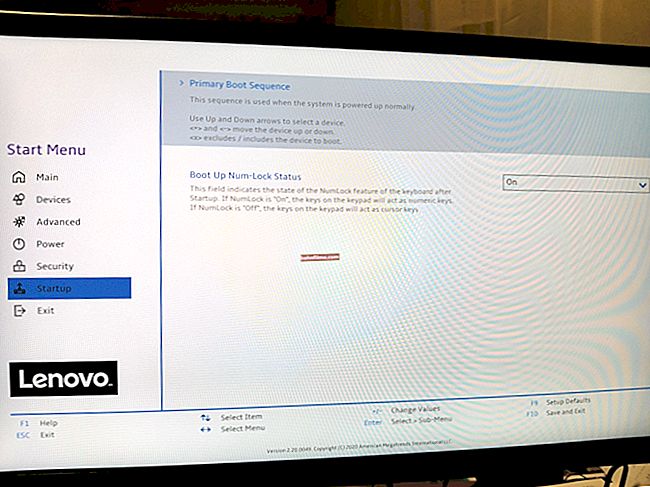 Good day!
Good day!
"Why does my Internet slow down every evening, I can't download anything, and the pages open for a long time?" - One friend asked me once ...
The next day, after reviewing his Internet settings, programs, router, etc., I was surprised by only one moment: his home Wi-Fi network was not protected by a password (it simply wasn’t there 👀).
Oddly enough, after setting a password, the brakes and lags of the Internet stopped, and in the evening the Internet began to work as expected. Apparently, there were some neighbors who successfully used his Internet channel (and in the evenings everyone comes home from work / school, etc.).
In general, I will give one piece of advice: in any case, if you suspect, change the password of the Wi-Fi network. If you don't have it at all, be sure to install it!
👉 Important! You also need to change the password for Wi-Fi because those who connect to your network will use the Internet under your IP address. In principle, if they watch some "cats" - then God would be with him ...
But just imagine if they commit illegal actions - the first one they come to will be you (most likely)! I think no one needs such visits? Therefore, the PASSWORD is required!
*
Setting a new password for the Wi-Fi network
To change the password for accessing a Wi-Fi network, you need to do something like the following:
- go to the Wi-Fi router settings;
- then open the tab / section for configuring the wireless network (also called "Wireless" or "Wi-Fi");
- in this tab select certificate of safety , encryption type , and password to access the network.
In general, everything is quite simple. Before moving on to specific models of routers and their configuration, I will focus on several important parameters (sounded above).
Certificate of safety
The most popular security certificates that are found in almost every router are: WEP, WPA-PSK, and WPA2-PSK. Today, the best security is provided by the WPA2-PSK certificate, and I recommend choosing it.
If devices that do not support WPA2-PSK will connect to the Wi-Fi network, then stop at the WPA-PSK option (some routers have WPA / WPA2-mixed mixed mode).
By the way, some budget models of routers may not work stably and break the connection when WPA2-PSK is selected. In this case, try limiting the speed of the router, as well as changing the security certificate.
Encryption type
Closely related to security certificate. If you choose WPA, the Temporary Key Integrity Protocol (TKIP) is used, when you use WPA2, the secured AES standard is used.
It is from this that I recommend starting from. if you choose a setting other than this, there may be problems connecting devices to your network.
Choosing a password
Here, perhaps, I will only say the most basic thing that I think about his choice. I noticed that many users set very simple passwords like: "11111111", "2222222", "11111122222", etc. Such passwords are very quickly brute-force and cracked!
It is unlikely, of course, that someone will deliberately and take a long time to guess the password for your home Wi-Fi network (especially since the vast majority of them do not contain any valuable data), and nevertheless I will give a couple of tips on what should be password:
- at least 8 characters;
- it is advisable to use both letters (Latin) and numbers (of course, some will also say special characters - but in my opinion it's not worth it, it's too dreary to type them on a phone or tablet when connected to the network);
- do not use your names, standard words (password, admin, computer, etc.), the most famous dates, etc.
Now let's move on to specific router models. So...
👉 To help!

You may find useful an article on how to enter the settings of the router - //ocomp.info/kak-zayti-po-192-168-1-1-vhod-vrouter.html
D-Link
One of the most popular brands of routers in our country. There are quite a large number of models of them, but there are not so many firmwares that differ from each other (at the root), 3-4 pcs. In this article I will give a few variations of them, and first, a few important parameters.
👉 IP address (default) to enter settings: //192.168.0.1
(preferably using the Internet Explorer browser)
Login (default): admin
Password (default): either an empty string or the same admin .
In older models of routers (such as DIR-300, DIR-320, DIR-615, DIR-651), as a rule, the firmware is not translated into Russian and is presented in such an orange-gray design. To change the password, you need to go to the settings of the router (if you cannot enter, then see this), and open the section "Setup / Wireless setup" .
At the bottom of the window in the column Network Key enter your password (see the screen below), by the way, there are set and security certificate, and type of encryption.... After the entered settings, save them - the button Save Settings .

DIR-300 - password setup / Setup / Wireless setup
By the way, there is a similar firmware in the Russian translation, it is configured in the same way.
For DIR-300 NRU and DIR-320 NRU router models (firmware version 1.2), the settings page looks a little different: a nice white background, all the main settings sections are presented on the left side. We open "Wi-Fi / Security Settings" , and install:
- network authentication: WPA-PSK (for example);
- encryption key PSK: this is your password;
- WPA Encryption: TKIP + AES.
Do not forget to save the settings by clicking on the button "Change" .

DIR-300 NRU / firmware version 1.2
The D-Link DIR-620 / DIR-320 NRU routers in firmware versions 1.3 and 1.4 have a slightly different interface: when you go to the main screen, you see a gray background and tiles (as in Windows 8) which display the main settings sections.
To change the password, open the "Wi-Fi / Security Settings" section (number 1 in the screenshot below), and then enter:
- network authentication: WPA2-PSK (for example);
- Encryption key - enter your password;
- WPA encryption - AES (see screenshot below).

DIR-300 NRU 1.4 / password setting
Router from Rostelecom (Sagemcom)
In general, with routers from Rostelecom, as a rule, there are no big problems - everything works as expected. And when you connect to the Internet, you will be given a password and everything will be set up. The firmware in routers is completely in Russian, so there are usually no questions about it.
👉Parameters to enter settings
Address: //192.168.1.1/
Password and login (default): admin
Browser fit almost any: Opera, Firefox, IE, Chrome, etc.
To set a password, open the section "WLAN Setup / Security" ... Further in the subsection "Manual access point configuration" select:
- Authentication - WPA2-PSK;
- WPA / WAPI password - enter your password;
- WPA / WAPI encryption - AES;
- then press the button "Apply / Save" (screenshot is shown below).
Actually, that's the whole setting ...

Sagemcom Fast 2804 - a router from Rostelecom
TP-Link
One of the largest manufacturers of routers, tens of millions of people around the world use their products. In our country, their routers are also very popular, and they do a very good job with Russian "realities" (they work with almost all Internet providers).
👉 Parameters to enter
IP address: 192.168.1.1 (in rare cases 192.168.0.1 , depending on the firmware version);
Username: admin;
Password: admin (type without periods, commas, etc.).
Most often you have to deal with the so-called "green" firmware. Found in routers: TP-LINK TL-WR740xx, TL-WR741xx, TL-WR841xx, TL-WR1043ND (45ND), etc. Approximately 50/50 firmware is in English / Russian.
The screenshot below shows the English version: to change the password, you need to open the section "Wireless / Wireless Security" then choose WPA / WPA2 -Personal and put:
- Version - Automatic (Recommended);
- Encryption - Automatic (Recommended);
- enter the password into the string PSK Password .
To save the entered settings, press the button. "Save" at the bottom of the window, centered.

TP-Link (green firmware)
Almost identical actions will need to be done in the Russian version of the "green" firmware: open the section "Wireless Security" then ask PSK password (see number 3 on the screenshot below).

TP-Link green firmware (Russian version)
Also, you can often find the "blue" version of the firmware in TP-Link routers (for example, TP-LINK WR340G, TP-LINK WR340GВ and other similar models).
Their setup is almost identical:
- first open the section "Wireless Settings" ;
- in the graph Security Type install WPA-PSk / WPA2-PSK;
- Security Option - put Automatic;
- Encryption - install Automatic;
- PSK Passphrase - this is the password (a slightly different spelling than in other firmware versions). It must then be specified when connecting wirelessly to the router.

TP-Link blue firmware
After the settings have been made, save them (button Save on the screenshot above, see number 3).
TRENDnet
The parameters for access are relevant provided that the router has factory settings and its IP has not changed.
👉 IP address to enter settings: //192.168.10.1
User Name (login): admin
Password (password for access): admin
In general, TRENDnet routers most often have 2 firmware versions: blue and gray (both in Russian and in English).
To configure security and set a password in the "blue" firmware, for example, a TRENDnet TEW-432 BRP router, you need to do the following:
- open section Wireless / Security ;
- in field Authentication Type select WPA;
- in field PSK / EAP select PSK;
- in field Cipher Type select Auto;
- in field Passphrase and Confirmed Passphrase enter password and press Apply (screen below).

TRENDnet TEW-432BRP / Security / Wi-Fi security setup
In the "gray" version of the firmware (for example, as in the TRENDnet TEW-651BR router), the actions are performed in the same way, even the menu items are located in the same places.

TrendNet TEW-651BR
ASUS
👉 Parameters to enter
IP address (web interface): 192.168.1.1
Login and password: "admin" (enter without quotes!)
Browser: IE preferred (although modern versions of the web interface work well with all popular browser versions Firefox, Chrome, Opera, etc.).
Most often, ASUS routers have two firmware: "blue" and "black" (moreover, they are usually localized in Russian).
To change the password in ASUS RT-N10E, RT-N10LX, RT-N12E, RT-N12LX, etc. routers (this is with the "blue" firmware), you need to open the section Additional Settings / Wireless / General Tab .
In the graph "pre-shared WPA key" enter your password and save the settings.

ASUS / blue firmware
In ASUS RT-N10P, RT-N11P, RT-N12, RT-N15U, RT-N18U routers, the firmware (in terms of password setting) differs only in color. In it, you also need to open the section "Wireless network" , tab "General" ... Then change the graph "WPA Preshared Key" and save the settings.

ASUS / "black" firmware version
Zyxel
👉 Parameters to enter
IP address router on the network (web interface) : 192.168.1.1
Login: admin
Password (default): admin
👉 Help! ZyXEL Keenetic: how to enter the router settings (my.keenetic.net)
To change the password for ZyXEL Keenetic of the first series, you need to go to the web interface, open the section "Wi-Fi network" , tab "Safety" ... Then set the following parameters:
- Authentication - WPA-PSK / WPA2-PSK;
- Protection type - TKIP / AES;
- Network key format - ASCII;
- Network Key (ASCII) - we set our password, which will then need to be specified when connecting wirelessly to the router.
After entering the settings, do not forget to save them by pressing the button "Apply" .

ZyXEL
Newer routers (for example, Zyxel Keenetic II: Start, Giga, Omni, Viva, Extra) have a slightly different firmware installed. To change the password in them, you must select the section in the menu "Wi-Fi" and then select the tab (top) - "Access point" .

ZyXEL Keenetic II
NetGear
👉 Parameters to enter
IP address (to enter the router settings): 192.168.1.1
Login: admin
Password (default): password
You can use almost any browser: for example, Internet Explorer, Mozilla Firefox, Opera, Safari, etc.
To change the password in NETGEAR routers (for example, model WNR2200): open the section "Wi-Fi setup" , then install:
- Safety parameters: select item WPA-PSK (TKIP) + WPA2-PSK (AES) ;
- Passphrase: enter your password (later you will need to specify it when connecting wirelessly to the router).

NETGEAR / Wi-Fi setup
Tenda
Recently, these routers have been quite popular. Even budget models provide a very good level of work, without crashes and reboots (by the way, I had a review of one of Tenda's models on my blog).
👉 Parameters
IP address: 192.168.0.1
Browser: Chrome, Opera, IE, Firefox
The firmware for most Tenda routers is typical and similar to each other. In general, you need to open the section "Wireless Settings" ("Wireless settings") and change the value in the line "Wi-Fi Password" ("Wi-Fi password"). An example is shown below.

Wireless Settings - Tenda
PS
In principle, in this short article I tried to consider all the most popular router models.If you have a different model from the ones listed above, the technique will not change: first you need to find the IP address to enter the router settings (you can find it in the documents, on a sticker on the device's case, or on the manufacturer's website).
Then, having entered the router settings, you need to open the Wi-Fi security section (or Wi-Fi settings) - then set the desired password and save the settings. Difficulties, most often, are with entering the settings of the router: either the password does not fit, or the IP address is incorrect, or something else ...
*
If you have something to add, just drop a few words in the comments (thanks in advance).
Happy settings!
👋
First publication: 03/14/2017
Correction: 1.12.2019
